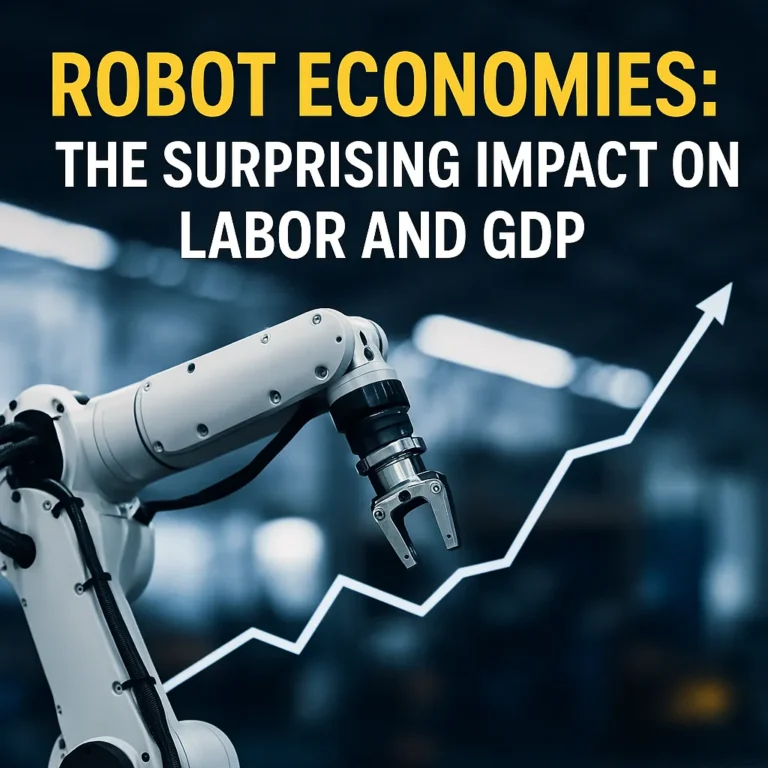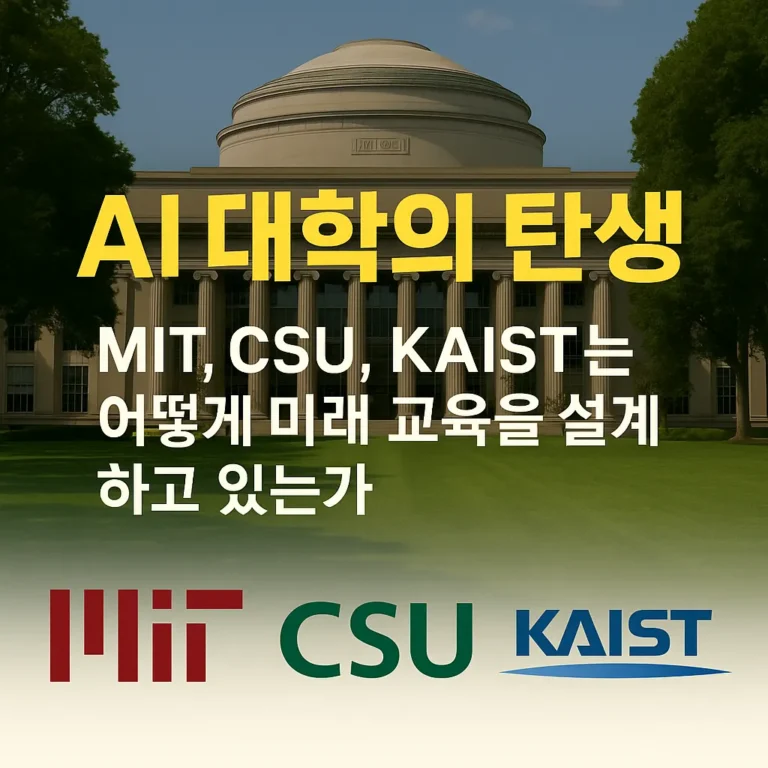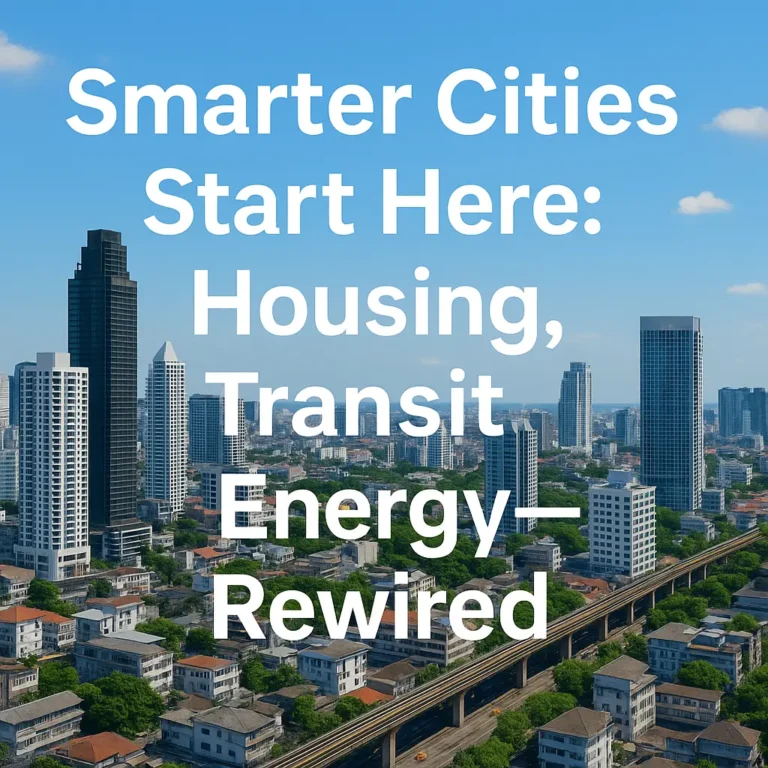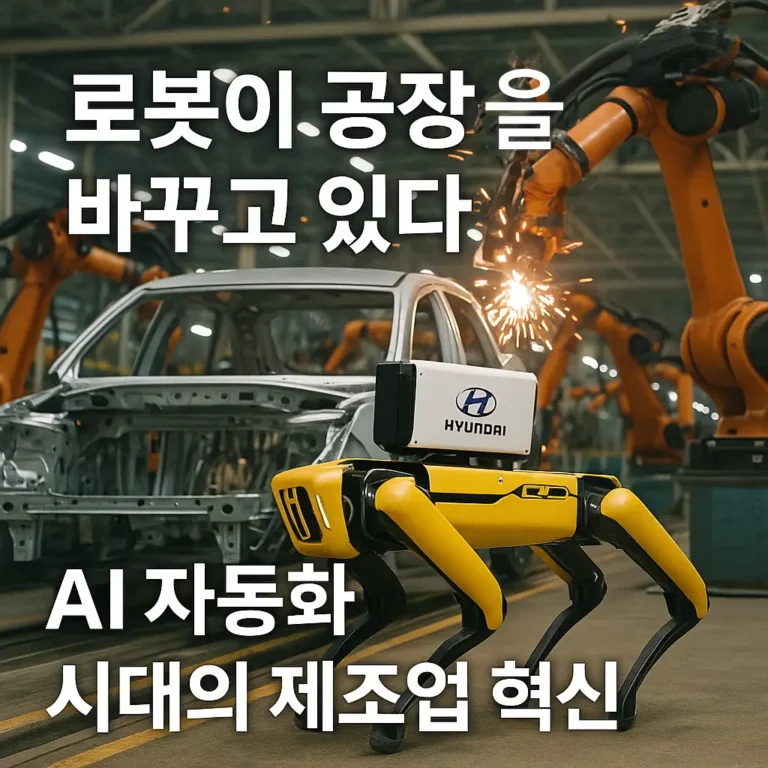Agentic AI Meets the Real World: How GPT-5 and Claude 3 Are Becoming Autonomous Workers
Agentic AI is no longer a concept on the horizon—it’s already reshaping how businesses operate. Built on powerful large language models like Claude 3 and the anticipated GPT-5, these AI systems are moving beyond passive assistance and into the realm of autonomous execution. They don’t wait for commands; they plan, act, learn, and complete real-world tasks with minimal oversight.
From writing and deploying code to summarizing legal documents, managing cloud infrastructure, or even triaging patient symptoms, agentic AI is quietly replacing the need for routine cognitive labor across industries. What once took teams of analysts or junior staff can now be handled by a coordinated network of AI agents—working 24/7, at scale, and without fatigue. This isn’t augmentation. It’s a structural shift in how work gets done.
In this blog, we’ll explore how agentic AI—led by models like Claude 3 and soon, GPT-5—is transforming productivity, reducing labor costs, creating new markets, and changing the very definition of a workforce. Whether you’re building with AI or simply working alongside it, understanding the rise of autonomous agents is no longer optional—it’s essential.
1. Economic Impact of Agentic AI: Productivity, Markets, and Capital Flows
The economic implications of Agentic AI—AI systems capable of self-directed task execution—are profound. These systems are not just automating work; they are transforming the architecture of productivity, labor allocation, and economic value creation. Their rise signals the emergence of a new class of digital labor: one that scales infinitely, works without fatigue, and continuously improves.
💼 Labor Productivity: Automating Cognitive Work at Scale
Where previous automation focused on physical labor or repetitive digital tasks (think RPA), Agentic AI penetrates deeper into knowledge work. Agents built on GPT-5 or Claude 3 can now:
- Write, test, and debug software autonomously (e.g. Cognition’s Devin),
- Conduct legal research and summarize case law,
- Monitor infrastructure and proactively optimize cloud resources,
- Design marketing campaigns or financial plans without step-by-step human prompts.
According to McKinsey & Company, generative AI technologies could contribute $2.6 to $4.4 trillion annually to global productivity. A large portion of this impact is expected to come from agentic systems that reduce time spent on documentation, coordination, research, and analysis. In software engineering alone, Agentic AI has been shown to improve task throughput by over 40% in early trials.
🌐 Industry Disruption and New Market Formation
Agentic AI is giving rise to entirely new market categories:
- Agent-as-a-Service (AaaS) platforms are emerging, where businesses subscribe to autonomous agents to handle customer service, analytics, or DevOps.
- Agent marketplaces are being built where independent agents—each specialized in coding, legal drafting, or financial analysis—can be deployed and monetized.
- In some cases, agents even hire or subcontract other agents, forming dynamic, recursive labor systems.
Analysts estimate the global Agentic AI market will grow from $7.8 billion in 2025 to over $52 billion by 2030, with an average CAGR exceeding 45%. Enterprise adoption is especially strong in SaaS, fintech, healthcare, and logistics.
📉 Labor Cost Compression & Job Restructuring
A major driver of adoption is cost. Unlike traditional software or human labor, AI agents:
- Don’t require hourly wages or benefits,
- Scale on demand across multiple simultaneous tasks,
- Operate 24/7 without supervision.
Salesforce reported that deploying autonomous agents cut customer support labor costs by 19%, while increasing resolution efficiency by 84%. In sectors like insurance, agents handling claims workflows reduced per-claim costs by 20%, leading to savings in the hundreds of millions for large firms.
However, this also brings risk: roles involving routine cognitive tasks are most exposed. Junior developers, analysts, and administrative professionals are particularly vulnerable. The challenge for economies is how to reskill and reallocate human capital toward creative, strategic, and oversight functions.
💸 Investment Shifts and Infrastructure Demand
Investors are now betting heavily on the infrastructure layer powering Agentic AI:
- Agent orchestration frameworks like AutoGen, CrewAI, and LangGraph
- Secure memory systems for persistent agent state tracking
- Multi-agent communication protocols like MCP (Multi-agent Communication Protocol) and A2A (Agent-to-Agent)
Venture funding has begun moving away from one-shot LLM tools toward agent ecosystems, with hundreds of millions flowing into startups focused on operationalizing agents in real-world businesses.
At the same time, enterprise IT must evolve to accommodate:
- Agent RAM environments (long-running sessions),
- Secure execution sandboxes, and
- Auditability layers to govern autonomous actions.
📊 Summary: A New Economic Stack
Agentic AI isn’t just a technical innovation—it’s the basis of a new economic layer.
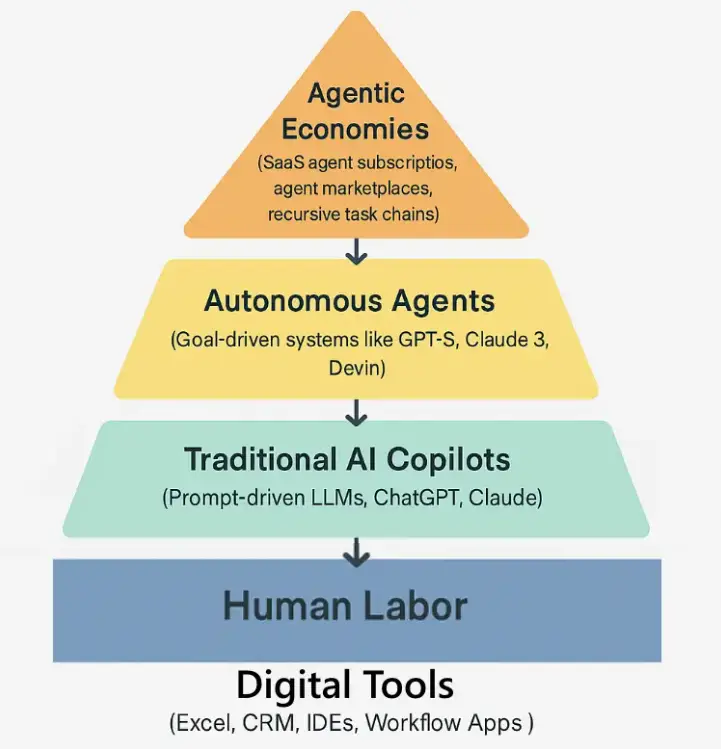
Below is a structured breakdown of how the Agentic AI Economic Stack affects different industries at each layer. This shows the depth of transformation as organizations move up the stack—from human labor to autonomous agents and eventually agentic ecosystems.
🧾 Cross-Industry Agentic AI Impact
| Industry | Copilot Use | Agentic Transformation |
|---|---|---|
| Legal | Summarizing contracts | Autonomous document drafting + compliance bots |
| Software Dev | Code generation | Full-stack engineering via AI dev agents |
| Logistics | Forecasting delivery | Multi-agent optimization of supply chains |
| Finance | Report writing, analysis | Autonomous portfolio management + compliance |
| Healthcare | Medical dictation | AI agents triaging patients + generating EMRs |
2. Agentic AI: A New Era of Autonomous Systems
Agentic AI refers to artificial intelligence systems that operate as autonomous agents, capable of executing multi-step goals without constant human input. Unlike traditional AI tools that passively respond to commands, agentic systems perceive their environment, plan, act, and adapt dynamically—often over long timeframes and across different platforms.
🧠 From Predictive Models to Autonomous Agents
The progression from standard machine learning models to agentic AI can be understood in three stages:
- Predictive AI: Models that analyze past data to forecast future outcomes (e.g., churn prediction, demand forecasting).
- Assistive AI (Copilots): Systems like ChatGPT, Claude 2, or GitHub Copilot that help users complete tasks through suggestions—but remain reactive and single-step.
- Agentic AI: Self-directed systems that define subgoals, interact with tools, learn from feedback, and execute complex workflows with minimal oversight.
📌 Definition: An AI agent is a system that combines goal orientation, memory, tool use, and adaptive reasoning to complete tasks with autonomy.
⚙️ Core Capabilities of Agentic AI
Modern agentic systems—such as GPT-5 or Claude 3 with agentic wrappers—incorporate several key modules:
- Planning Engine: Breaks down user objectives into executable subgoals (e.g., ReAct, Tree of Thought frameworks).
- Memory: Retains context across long tasks, enabling iterative updates and learning over time.
- Tool Use: Executes API calls, runs shell commands, writes to files, or controls web interfaces (e.g., browsing, spreadsheets).
- Environment Awareness: Adjusts based on real-world feedback or state changes (e.g., error logs, task success/failure).
- Self-Correction: Uses evaluation loops or feedback agents to debug, retry, or escalate tasks.
These capabilities allow agents to behave like digital employees—managing tasks from initiation to completion with a level of autonomy never seen before.
🤖 GPT-5 and Claude 3 as Agentic Platforms
What separates GPT-5 and Claude 3 from their predecessors isn’t just their scale—it’s their architecture for agency. These models now:
- Maintain structured working memory across sessions,
- Execute tool-augmented tasks via plugins or built-in environments,
- Support goal-driven execution chains, such as retrieving documents, analyzing content, and summarizing outputs into reports—all without repeated human prompting.
For example:
- GPT-5 paired with AutoGen can build and deploy a web app by coordinating multiple AI agents (e.g., UI designer, database engineer, tester).
- Claude 3 can ingest large corpora, synthesize legal briefs, and evaluate its own reasoning in iterative loops.
This marks a departure from prompt-based assistance toward true digital agency.
🔄 Key Differences from Traditional AI Copilots
| Feature | Traditional AI Copilot | Agentic AI System |
|---|---|---|
| Interaction Style | Prompt-response (one-shot) | Multi-step goal execution |
| Tool Use | Limited or manual | Autonomous API/web/app integration |
| Memory | Session-based or transient | Persistent, multi-turn, structured memory |
| Autonomy | Requires frequent human input | Operates independently over long tasks |
| Use Cases | Text generation, Q&A | Coding, research, workflows, decision loops |
As we transition deeper into the age of AI autonomy, understanding the design logic and operational scope of agentic AI becomes essential—not just for technologists, but for every organization preparing to integrate these systems into real-world operations.
3. Real-World Use Cases: Agentic AI in Action
As GPT-5 and Claude 3 move from conversational assistants to fully autonomous agents, their impact is being felt across industries. These models—when integrated with orchestration frameworks and tool-use capabilities—are now executing complex workflows that were once exclusively handled by human teams. From writing software to drafting legal documents and managing IT systems, Agentic AI is no longer a concept—it’s operational.
Here’s how these models are being deployed in the real world:
👨💻 3.1 Software Engineering: From Copilot to Developer
The most visible leap in agentic capability is in software development. With GPT-5 integrated into systems like AutoGen or LangGraph, AI agents now:
- Clone repositories,
- Understand file structures,
- Write new code modules,
- Debug and test outputs,
- Deploy full-stack applications.
The standout example is Devin, an AI software engineer developed by Cognition, which autonomously completes coding projects from end to end. It doesn’t just generate snippets—it opens terminals, uses Git, reads documentation, and iteratively debugs like a junior developer.
⚙️ Impact: Software teams can scale engineering efforts without hiring, reduce bug turnaround time, and prototype products rapidly.
⚖️ 3.2 Legal Research and Document Automation
Claude 3 is being used by law firms and AI startups to handle:
- Contract review and summarization,
- Regulatory compliance checks,
- Legal brief generation,
- Multi-document synthesis across jurisdictions.
Unlike basic legal LLMs, Claude 3 agents are now able to ingest thousands of pages, isolate key clauses, and even rewrite documents based on jurisdictional differences—with the ability to explain reasoning step-by-step.
📉 Impact: Dramatic time and cost savings in contract lifecycle management, due diligence, and discovery processes.
📊 3.3 Financial Services and Market Analysis
Agentic AI is transforming roles in investment banking, asset management, and insurance operations. GPT-5 agents are being deployed to:
- Analyze earnings reports and market sentiment,
- Generate investment summaries,
- Run real-time compliance checks,
- Handle repetitive middle-office tasks (e.g., risk flagging, onboarding docs).
In hedge funds, multi-agent teams perform real-time news analysis and dynamically adjust portfolios based on signals.
💰 Impact: Reduction in analyst hours, increased speed in trading decisions, and round-the-clock compliance monitoring.
🏥 3.4 Healthcare: Administrative Agents and Triage Assistants
In clinical environments, Claude 3 has been adapted into:
- Triage assistants that gather patient information and flag urgent symptoms,
- Agents that transcribe, format, and summarize EMRs (Electronic Medical Records),
- Tools for insurance coding and billing validation.
These agents help reduce physician administrative load by automating data entry, cross-referencing diagnostics with guidelines, and pre-filling documentation for review.
🩺 Impact: Time savings of 20–30% per patient interaction; more clinician face-time with patients and fewer documentation errors.
🚚 3.5 Logistics and Supply Chain Optimization
Agentic AI is revolutionizing logistics by integrating into supply chain systems to:
- Monitor inventory levels,
- Forecast demand based on weather, traffic, and market conditions,
- Trigger automated restocking or rerouting,
- Negotiate pricing with vendor APIs.
Amazon and Walmart-style logistics ecosystems are beginning to test multi-agent swarms that coordinate procurement, fulfillment, and route planning.
📦 Impact: Lower fulfillment times, increased resilience to disruption, and cost reduction via just-in-time inventory strategies.
✨ 3.6 Agent-Oriented Design in the Real World
These real-world use cases aren’t isolated experiments—they’re the early edge of a massive transformation. Organizations are beginning to design operations around agents rather than humans:
- Human-AI hybrid teams: humans focus on creativity and oversight, while agents handle the execution.
- Autonomous pipelines: from input to outcome without manual touchpoints.
- Feedback loops: agents learn and adapt to performance metrics over time, improving autonomously.
As we’ll explore in the next section, these deployments are not just functional—they are financially and strategically transformative.
4. Technologies Behind the Agents: Tools, Memory, and Orchestration
Agentic AI isn’t powered by language models alone. The real leap toward autonomy comes from the ecosystem of technologies that surround GPT-5, Claude 3, and other foundation models—equipping them with memory, tool-use capabilities, reasoning frameworks, and orchestration logic.
This section breaks down the foundational components that transform a capable LLM into a functional, autonomous agent.
🛠️ 4.1 Tool Use APIs: Acting in the Real World
The first requirement for agent autonomy is the ability to interact with external tools. LLMs by themselves can generate ideas and respond to queries, but agents need to take action: query databases, run code, open files, or send messages.
Examples:
- GPT-5 using Python to execute calculations or scripts.
- Claude 3 triggering API calls to retrieve live market data or customer records.
- Agents navigating web browsers, spreadsheets, or shell environments autonomously.
Tool use is often facilitated by frameworks like LangChain and OpenAI function calling, which let models safely interact with defined external capabilities.
🧩 Why it matters: Without tool use, AI remains reactive. With it, agents become goal-oriented problem-solvers.
🧠 4.2 Memory Systems: Persistence Beyond the Prompt
Autonomous agents require memory—not just context windows, but structured, persistent, and queryable representations of what they’ve done, learned, and plan to do next.
Types of Memory:
- Episodic memory: Tracks past events (e.g., completed tasks, prior inputs/outputs).
- Working memory: Stores current state (e.g., in-progress code, user preferences).
- Long-term memory: Retains reusable knowledge (e.g., workflows, domain insights).
Memory stacks are built using:
- Vector databases (like FAISS, Pinecone) for semantic search
- JSON or SQL-based structured storage
- Custom embeddings to recall relevant knowledge in-context
🧠 Why it matters: Memory enables agents to plan, reflect, and improve over time—turning single-turn models into persistent workers.
🔁 4.3 Multi-Step Reasoning and Planning Engines
Autonomous agents must break goals into steps, monitor progress, and recover from failure. This is made possible through reasoning frameworks such as:
- ReAct (Reasoning + Acting): Interleaves thought and action cycles.
- Tree of Thought (ToT): Explores multiple possible solution paths and selects the best.
- Chain-of-Thought (CoT): Enables sequential step-by-step reasoning.
These strategies are embedded into agent stacks using custom prompts, logic wrappers, or agent managers that supervise and evaluate subtask execution.
🧠 Why it matters: Planning engines help agents behave like strategists, not just responders.
🤖 4.4 Agent Orchestration Frameworks
True autonomy arises when multiple agents work together, coordinating tasks, roles, and decision logic. This is where orchestration frameworks come in.
Popular Agent Frameworks:
- AutoGen (Microsoft Research): Enables multi-agent collaboration, feedback loops, role definition, and memory management.
- CrewAI: Task-routing and role-based agent teamwork for enterprise environments.
- LangGraph: Event-driven architecture for agents using LangChain + directed graphs.
These frameworks allow companies to build agent teams such as:
- A planner agent (assigns subgoals),
- A researcher agent (gathers data),
- A summarizer agent (packages the output).
🔄 Why it matters: One agent can complete a task; many agents can run an entire operation.
🌐 4.5 Multi-Agent Communication Protocols (MCP, A2A)
As agents scale, they require a standardized way to communicate. Projects like MCP (Multi-agent Communication Protocol) and A2A (Agent-to-Agent) are defining how agents:
- Negotiate roles,
- Share context,
- Resolve conflicts,
- Delegate sub-tasks recursively.
These protocols mimic organizational behavior—creating agent societies capable of complex decision-making.
🤝 Why it matters: Autonomous agents won’t just work in isolation—they’ll collaborate like human teams.
🔒 4.6 Execution Sandboxes and Safety Layers
Given that agents operate independently, it’s critical to contain their actions and prevent unintended outcomes.
Safety Mechanisms:
- Sandboxed environments: Prevent agents from executing harmful code or accessing unauthorized resources.
- Rate-limiting and approval gates: Require human confirmation before sensitive tasks.
- Auditing tools: Track and log every decision or action for compliance and traceability.
🔐 Why it matters: Autonomy without guardrails can result in chaos. Enterprise deployment demands safe autonomy.
Together, these technologies form the Agentic AI Stack—a modular, composable architecture that turns passive models into proactive systems capable of navigating the real world.
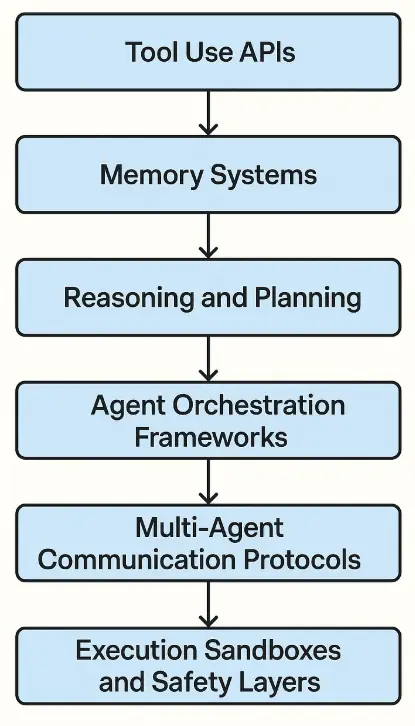
5. Case Studies: How Businesses Are Already Using Autonomous Agents
While agentic AI is still emerging, several pioneering organizations are already demonstrating its power in production environments. These early adopters are not just running experiments—they are generating real value, reshaping workflows, and laying the foundation for agent-first operating models.
Below are notable case studies across diverse sectors showing how GPT-5, Claude 3, and other agentic systems are being operationalized.
🧠 5.1 Cognition’s Devin – A Fully Autonomous Software Engineer
Use Case: Full-stack development
Model: GPT-4-turbo + custom tool wrapper
Industry: Software/Developer Tools
Devin, launched by Cognition Labs, is the first public-facing autonomous AI software engineer. It can:
- Clone GitHub repositories
- Debug and test code
- Open pull requests
- Deploy production-ready apps
Devin doesn’t just generate code; it reasons through problems, maintains state across sessions, and interacts with developer tools autonomously.
🧩 Impact: Reduces the need for junior engineering resources, accelerates project delivery, and enables 24/7 task execution.
⚙️ 5.2 Salesforce Einstein GPT Agents – Enterprise Workflow Automation
Use Case: Customer service, lead management
Model: GPT-based + proprietary orchestration
Industry: SaaS / CRM
Salesforce integrated autonomous agents into its Einstein GPT suite, enabling:
- Automated lead qualification
- Dynamic email generation
- Real-time customer support escalation
These agents work within CRM workflows, accessing records, triggering updates, and routing tasks between departments—all autonomously.
📉 Impact: 19% labor cost reduction in service operations; 84% of tickets resolved without human escalation.
🛡️ 5.3 Scale AI’s Task-Handling Agents – Data Operations and Annotation
Use Case: Workflow execution at scale
Model: LLM agents integrated with human-in-the-loop validation
Industry: AI training/data labeling
Scale AI uses agentic systems to manage complex annotation pipelines. Tasks like document parsing, data extraction, and quality checking are now:
- Initiated by agents,
- Passed to humans for review (if needed),
- Closed with agent-driven reporting.
Their internal “autopilot” infrastructure runs hundreds of agent-managed tasks with minimal oversight.
📊 Impact: Massive throughput increase for structured data pipelines; faster time-to-delivery on AI training datasets.
🏥5.4 Inflection AI + Healthcare Agents – Medical Intake and EMR Summarization
Use Case: Patient triage, EMR generation
Model: Claude 3-like LLMs with health-specific tuning
Industry: Healthcare
Using Claude-like models, Inflection AI and its partners are deploying agents to:
- Gather patient histories before visits,
- Triage symptoms using evidence-based logic,
- Generate encounter notes for EMR insertion.
These agents improve accuracy while reducing cognitive load for clinicians.
🩺 Impact: Saves doctors up to 2 hours/day in paperwork; improves diagnostic consistency.
📦 5.5 Walmart Logistics AI Agents – Supply Chain Resilience
Use Case: Dynamic inventory and fulfillment
Model: GPT-style agents + multi-agent coordination
Industry: Retail/Logistics
Walmart is experimenting with multi-agent orchestration to:
- Adjust inventory levels in real time,
- Reroute shipments based on demand and weather,
- Negotiate restocking orders with supplier APIs.
Agents operate across procurement, fulfillment, and delivery planning layers.
🚚 Impact: Reduced overstock, faster customer delivery, and improved disruption response.
🧭 Lessons from the Frontlines
| Company | Agent Type | Key Benefit |
|---|---|---|
| Cognition | Autonomous Developer | Full-code automation, rapid prototyping |
| Salesforce | Workflow Orchestrator | Cost reduction, salesforce productivity |
| Scale AI | Task Pipeline Agent | High-volume data handling |
| Inflection AI | Medical Admin Agent | Physician efficiency, EMR quality |
| Walmart | Logistics Coordination | Adaptive supply chain optimization |
These companies demonstrate that agentic AI is no longer theoretical—it’s operational and driving value across domains. They also show that the key to success is not just the LLM itself, but how it’s embedded in orchestration frameworks, memory systems, and real-world feedback loops.
6. Conclusion
We are entering a pivotal moment in technological history. What began as chat-based interfaces and prompt-driven copilots has now evolved into something more ambitious—and more autonomous. Agentic AI, embodied by frontier systems like GPT-5 and Claude 3, is no longer confined to assisting users. It is working independently, learning iteratively, and coordinating dynamically with other agents, systems, and even humans.
This shift isn’t simply a new chapter in AI innovation—it’s a transformation of how labor, intelligence, and decision-making are distributed across the economy.
💡 Summary of the Agentic AI Revolution
- Economically, agents are slashing operational costs, accelerating workflows, and unlocking entirely new markets—like Agent-as-a-Service and agentic IP marketplaces.
- Technologically, the agent stack now includes memory, planning, tool use, orchestration, and communication protocols—empowering agents to operate across complex environments.
- Industrially, companies from Salesforce to Scale AI to Cognition are already deploying autonomous agents to replace or enhance human execution in real-world settings.
- Regulatorily, we are navigating a new frontier where traditional policies struggle to keep pace with self-improving, self-directed systems.
- Socially, we face a choice: will we let agents replace us—or will we design for synergy, ensuring humans remain in the loop as guides, stewards, and strategic architects?
📚 References
- “The Economic Potential of Generative AI: The Next Productivity Frontier”
McKinsey & Company, 2023
https://www.mckinsey.com/capabilities/mckinsey-digital/our-insights/the-economic-potential-of-generative-ai - “Agentic AI: How AI Agents Will Transform Work”
Salesforce Research, 2024
https://www.salesforce.com/news/stories/agentic-ai-impact-on-workforce-research - “AutoGen: Enabling Multi-Agent Collaboration with LLMs”
Microsoft Research, 2023
https://github.com/microsoft/autogen - “The Rise of Devin: The First Fully Autonomous AI Software Engineer”
Cognition AI, 2024
https://www.cognition-labs.com - “GPT-5 and Claude 3: Frontier Models in the Age of Agency”
Anthropic & OpenAI Announcements, 2024
https://www.anthropic.com/news
https://openai.com/blog - “Agentic AI in the Labor Market: Forecast 2025–2035”
Market.us, 2024
https://market.us/report/agentic-ai-in-labor-market - “LangGraph: Building Event-Driven Agents Using LLMs”
LangChain Project, 2024
https://docs.langchain.com/langgraph - “Agentverse: A Decentralized Marketplace for AI Agents”
AgentVerse Labs, 2024
https://agentverse.ai - “EU AI Act: Harmonized Rules on Artificial Intelligence”
European Commission, 2024
https://artificialintelligenceact.eu - “The NIST AI Risk Management Framework (AI RMF 1.0)”
U.S. National Institute of Standards and Technology, 2023
https://www.nist.gov/itl/ai-risk-management-framework
Keywords
Agentic AI, GPT-5, Claude 3, autonomous AI agents, AI workforce automation, agent-as-a-service, AI in the workplace, AI productivity, generative AI economics, AutoGen, Devin AI, LangChain, multi-agent systems, AI governance, agent orchestration, Claude 3 use cases, AI tool use, AI job automation, future of work AI, agent-powered economy
